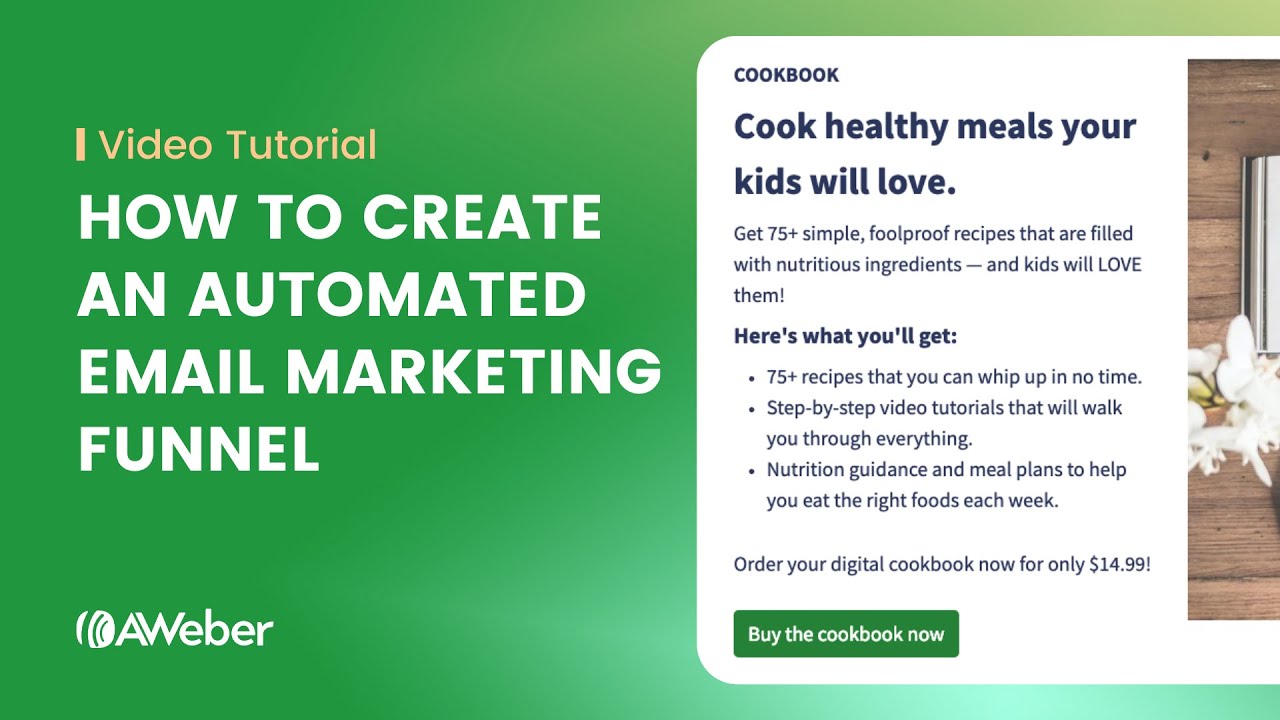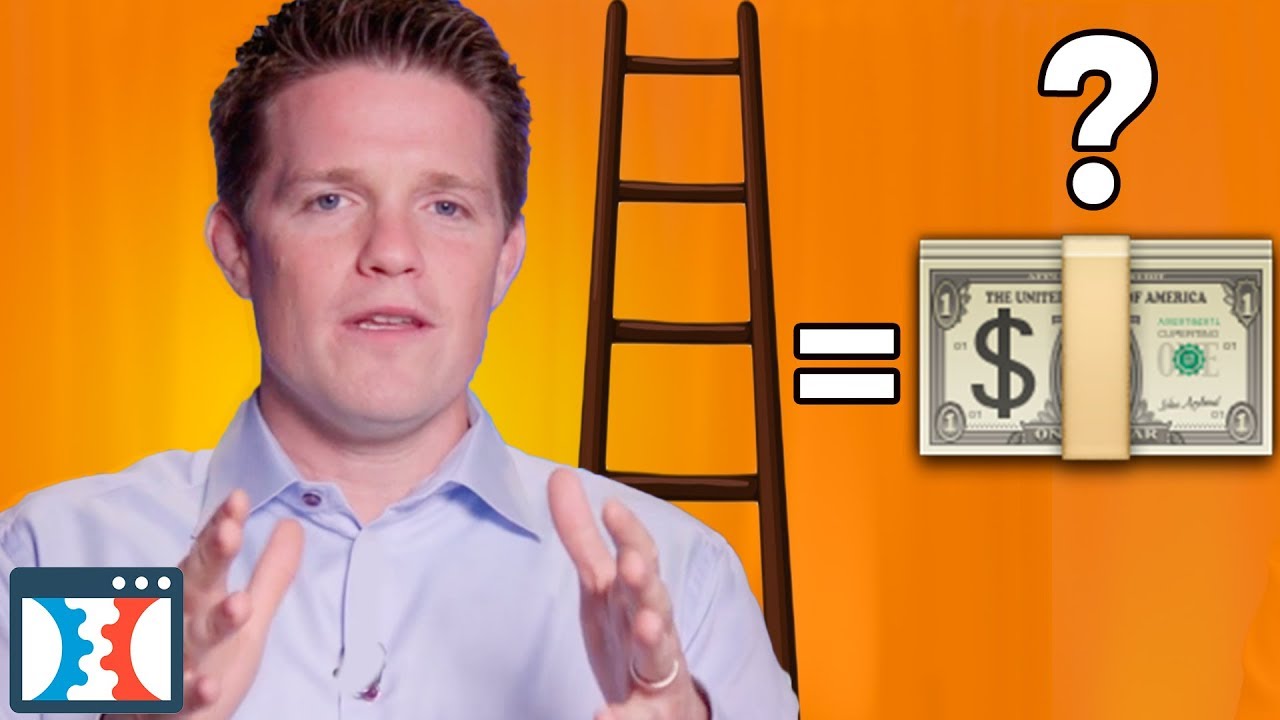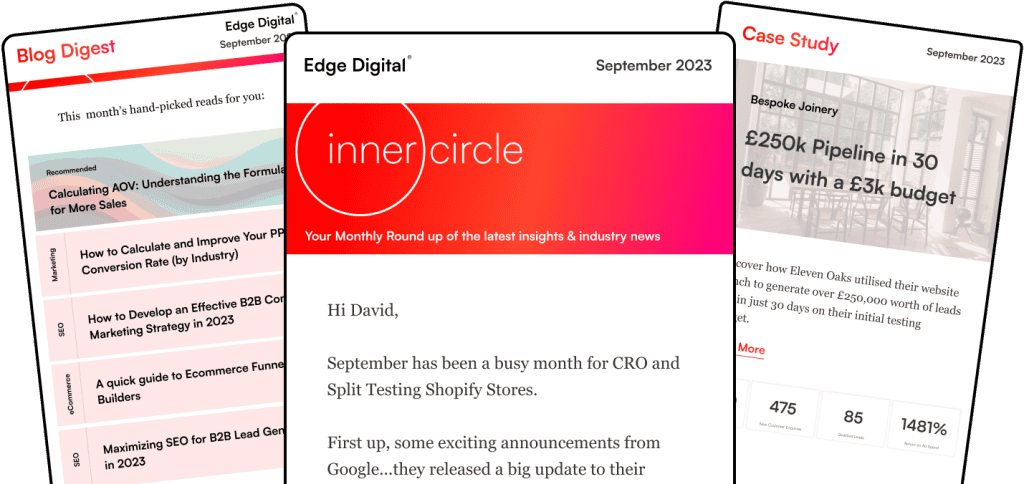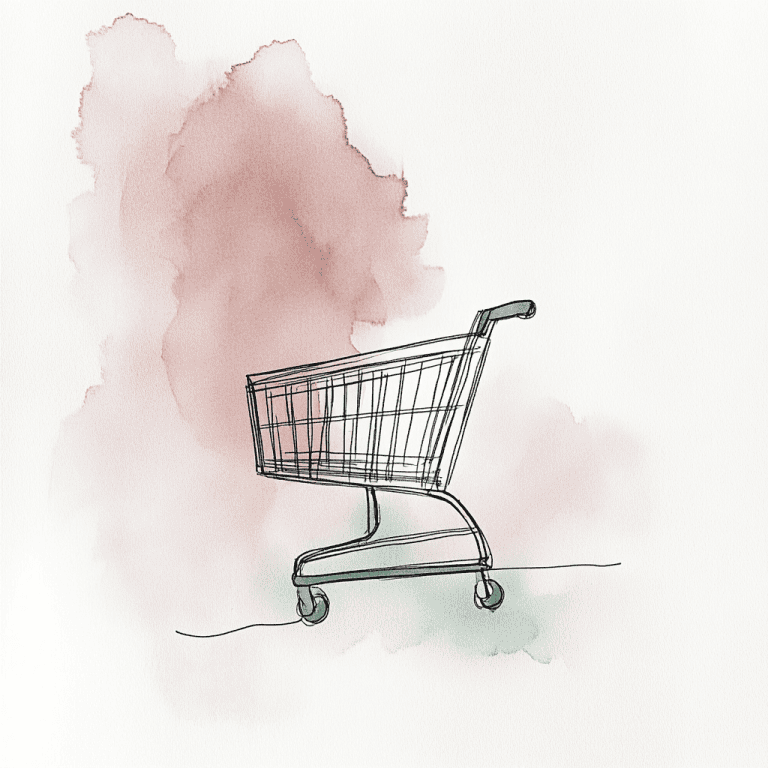Email marketing is a powerful tool for connecting with our audience and nurturing relationships. Building an email sales funnel might seem daunting at first, but understanding why a sales funnel is important can help. A well-built sales funnel minimizes gaps that could lead to potential customers dropping out, thus increasing conversion rates and optimizing marketing efforts. By aligning marketing and sales efforts, it can become an effective way to guide potential customers from initial awareness to making a purchase.
We will explore what a sales funnel is and explain the concept of the Value Ladder sales funnel. Additionally, we will provide a clear, step-by-step guide on how to build your own Value Ladder sales funnel, ensuring you can enhance your email marketing efforts efficiently and effectively.
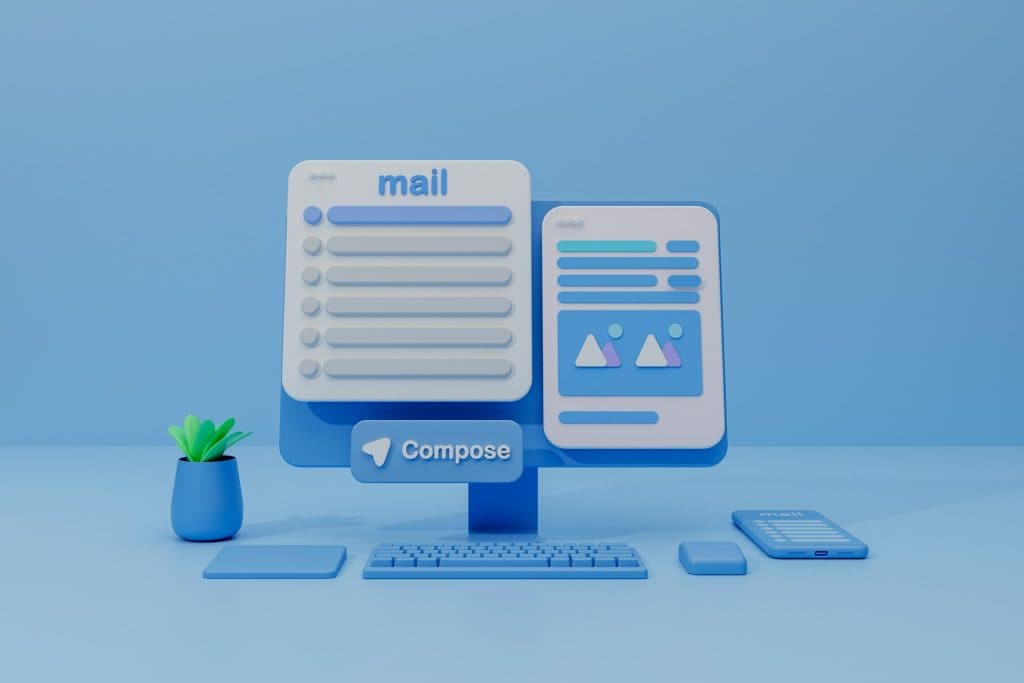
Email marketing is a great way of building relationships and trust, and in turn developing more sales
Key Takeaways
Understand what a sales funnel is and its importance.
Learn how to build a Value Ladder sales funnel.
Discover the best email sales funnel tools.
What is an Email Sales Funnel?
An email sales funnel is the journey someone takes from first hearing about our product to making a purchase and possibly becoming a loyal customer via email. As with all Sales Funnels, it’s divided into three main stages, known as the sales funnel stages:
Top of the funnel: Awareness – Here, we target the audience to catch their attention. This is where prospective customers first learn about our product.
Middle of the funnel: Consideration – At this point, we work on getting potential customers interested in our product. They start evaluating whether our offering meets their needs.
Bottom of the funnel: Conversion – Finally, we persuade the potential customer to make a purchase.
Understanding the sales funnel process is crucial as it helps navigate the stages consumers go through from awareness to conversion, ensuring that our marketing efforts are aligned with each stage.
Visualising the sales funnel can help in understanding its stages, from awareness to consideration to conversion, and focusing on each point. This structure guides our marketing efforts more effectively.
Sales funnel basics
A sales funnel represents the journey a potential customer takes from the initial awareness of a product or service to the final purchase decision. This process typically involves multiple stages, including awareness, interest, consideration, intent, evaluation, and purchase. By meticulously crafting and optimizing each stage, for instance Edge Digital helps businesses capture leads, nurture them with targeted content, and guide them seamlessly towards conversion. Through our expertise in digital marketing, analytics, and customer engagement, we ensure that every touchpoint within the sales funnel is strategically designed to maximize conversion rates and drive sustainable growth for our clients
What is the Value Ladder Sales Funnel?
The Value Ladder sales funnel, a specific example of a company’s sales model, has been instrumental in many companies’ growth. This method was devised by Russell Brunson, the co-founder of ClickFunnels helping them achieve a staggering increase in revenue—from zero to over $10 million in just one year, exceeding $100 million in a few short years, and could be on course for a $5 billion exit.
This funnel includes four key stages:
Bait: We begin by offering a lead magnet to potential customers in exchange for their email addresses.
Frontend: Next, we present our least expensive and least valuable product.
Middle: Following that, we offer a more expensive and valuable product.
Backend: Finally, we offer our most expensive and valuable product.
Additionally, we often introduce a continuity programme, such as a subscription product, which generates recurring revenue.
The Value Ladder allows us to:
Start relationships by providing free value.
Nurture these relationships through continuous, free value via email.
Build trust by offering progressively more valuable paid products at each stage.
By carefully guiding our customers through these stages, we create a seamless journey that encourages long-term engagement and maximises revenue potential. This thoughtful approach turns potential customers into loyal clients by steadily increasing the value they receive, ensuring satisfaction at each step of the journey.
How to Build a Value Ladder Sales Funnel

Creating something potential customers cannot miss out on is crucial for building an effective Value Ladder sales funnel. A successful sales funnel enhances sales efficiency by converting leads into customers, understanding their needs, and guiding them through various stages to boost sales performance and revenue growth.
Step 1: Create an Irresistible Lead Magnet for the Customer Journey
A lead magnet is a free resource we offer to potential customers in exchange for their email address. It’s crucial to provide something genuinely valuable that people are eager to obtain. Examples of effective lead magnets include:
Reports
Ebooks
Webinars
Email courses
Video courses
Consider offering a free sales funnel template, which can be customized in Excel or Google Sheets, to help entrepreneurs and small businesses optimize their sales funnel.
The lead magnet must solve a problem that drives your potential customers’ interest and engagement. Additionally, it should give a taste of the more comprehensive solutions found in your frontend offer. Just like a free food sample in a supermarket, your lead magnet should showcase the value you can provide, making it easier for customers to opt for the full version.
The quality and relevance of your lead magnet are vital. If it impresses, it can lead to more significant interest in your offerings. If it fails, you might lose the potential customer forever, as first impressions are crucial. So, ensure it’s something your ideal customers highly desire and hand it out for free.
Step 2: Craft a Landing Page for Your Target Audience
Once you have your lead magnet, the next step is to design a landing page tailored to capture leads by understanding your target audience. This page should entice visitors to provide their email addresses. Here’s what an effective landing page requires:
Headline: It should clearly state how your lead magnet will benefit the visitor.
Opt-in Form: This form allows prospects to enter their email address, sometimes including their name.
Call-to-Action (CTA) Button: This must be compelling and encourage the visitor to act now to get the lead magnet.
You can also add images, testimonials, and short descriptions to strengthen the appeal. The aim is to convert visitors into subscribers by enticing them with the lead magnet.
A well-executed lead generation page increases the likelihood of visitors signing up, turning them into leads you can nurture over time.
Step 3: Develop a Frontend Offer
Building on the lead magnet, the next step is to create a frontend offer. We recommend a low-cost product, such as an ebook or a video masterclass, priced around £5. An ebook should contain around 25,000 words, offering substantial value without overwhelming effort. Alternatively, a video masterclass of 45-60 minutes can serve the same purpose.
The frontend offer should address the same problem as the lead magnet but provide deeper insights and more value. Pricing it low helps convert leads into paying customers, making the transition from free to paid smooth and appealing. Understanding customer lifetime value (CLTV) is crucial here, as it provides valuable insights into business efficacy, helping organizations evaluate spending against customer acquisition costs and set acquisition cost goals.
For instance, Matthew Hussey’s guide, “Momentum Texts”, builds on his free lead magnet, offering more detailed texting advice at a low price. Following this model helps create a seamless customer journey, making them more likely to purchase.
Step 4: Design a Sales Page for Your Frontend Offer
The next step is to create a sales page for your frontend offer. Given its low price, a concise and effective sales page can work wonders. Here are the essential elements of a successful sales page:
Headline: Clearly state the main benefit of the offer.
Subheadline: Explain what the product is, be it an ebook, course, or programme.
Sales Copy: Provide detailed benefits of the product.
Social Proof: Include credentials, experience, and testimonials to build trust.
CTA Button: Make it prominent and irresistible.
Money-Back Guarantee: Offer a 30-day refund, assuring buyers of the value.
Sales reps play a critical role in guiding potential customers through various stages of the sales funnel. They build relationships, qualify leads, and provide relevant information that helps prospects make informed decisions, ultimately driving them towards a purchase. The sales team can better understand customer needs through various content types and improve communication with modern buyers, navigating the sales funnel effectively.
These elements together can persuade potential customers to make the purchase, establishing trust and showcasing the offer’s value clearly.
Step 5: Create a 6-Email Follow-Up Sequence
Now, it’s crucial to follow up with new subscribers who have downloaded your lead magnet. We recommend a six-email sequence to nurture the relationship and build trust. Here’s how:
Email #1: Who Are You? Introduce yourself with a relevant personal story to create an emotional connection.
Email #2: Where Did You Come From? Share your journey and key experiences that led you to where you are now.
Email #3: What Do You Do? Explain the problems you solve and how your approach is unique.
Email #4: How Did You Gain This Expertise? Describe your qualifications and experiences that make you an expert.
Email #5: Success Stories Share testimonials and success stories from your customers to build social proof.
Email #6: Call to Action Encourage the subscriber to take the next step, whether it’s purchasing your frontend offer or engaging further with your content.
Additionally, understanding and analyzing existing customers can enhance the effectiveness of your sales funnels. By focusing on customer satisfaction and leveraging insights from current clients, you can improve your processes and increase referrals, ultimately driving more sales and attracting new clientele.
Use Cases & Examples
Email Sales Funnels for B2C – Use Cases & Examples
When we’re targeting individual consumers, our approach in a B2C (Business-to-Consumer) email sales funnel is more personal. We usually start by offering something valuable, like a free eBook, report, or discount, in exchange for their email address. This lead magnet helps us build our email list and begin nurturing potential customers.
Example Steps:
Welcome Email: We introduce ourselves and confirm their subscription.
Value Email: We provide helpful information or help them solve a problem.
Product Highlight: We showcase the benefits of our product or service.
Testimonial Email: We share stories from satisfied customers to build trust.
Offer: We send a special discount or limited-time offer.
Example:
Imagine we’re selling fitness equipment. We’d send a welcome email thanking them for joining, followed by an email with workout tips. Next, we’d highlight a specific piece of equipment and share testimonials from happy users. Finally, we’d offer a discount code for their first purchase.
Email Sales Funnels for B2B – Use Cases & Examples
In B2B (Business-to-Business) email sales funnels, our emails need a more professional tone. We focus on building authority and demonstrating how our products or services can solve problems or improve efficiency for businesses.
Example Steps:
Introduction Email: We introduce our company and explain how we can help.
Authority Building: We provide case studies or whitepapers to establish our expertise.
Product/Service Deep Dive: We go into detail about our offerings.
Social Proof: We share success stories and testimonials from other businesses.
Call to Action: We encourage them to set up a meeting or request a demo.
Example:
If we’re offering a software solution for customer relationship management, we’d start with an email introducing our company and our solution’s benefits. Next, we’d send a detailed case study showing how we’ve helped another business. Then, we’d provide a deep dive into our software features and share testimonials from other companies. Finally, we’d invite them to schedule a demo or consultation session.
Best Email Sales Funnel Tools
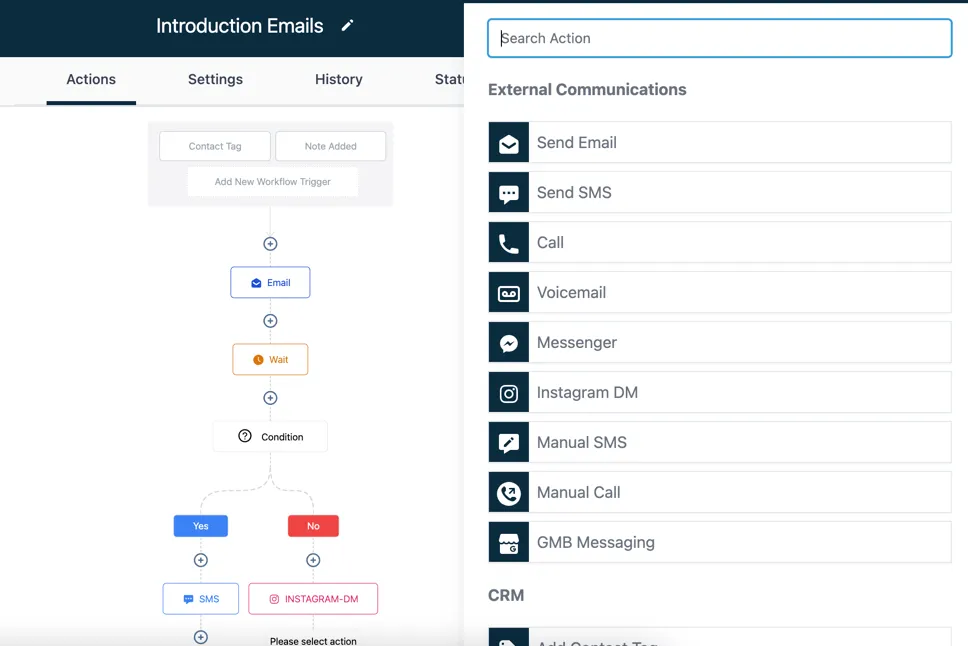
One of our favourite tools for building fully featured email funnels is Go High Level
Here are some top SaaS platforms that excel in helping us create effective email sales funnels:
HubSpot: This platform is perfect for businesses of any size. It offers extensive features, such as automated email sequences and customer management.
HubSpot’s pricing starts at $44.00/month, making it a versatile choice.
Mailtrap: With Mailtrap, we can strategically plan our email campaigns to nurture leads right from the start. Its funnel framework helps increase trust and brand authority.
This tool is a good fit for those wanting to improve personalised marketing.
Automizy: Known for its ease of use, Automizy allows us to create email sequences effortlessly. A new subscriber triggers the email funnel automatically, making it ideal for those who prefer a hands-off approach.
ClickFunnels: ClickFunnels enables us to build high-converting email sales funnels swiftly.
Their setup allows us to create a six-email follow-up sequence seamlessly, making campaign launches quick and easy. Need a WordPress alternative? Check out OptimizePress
Go High Level – Pretty much incorporates all of the above in a single, easy to use platform. We’d recommend checking them out!
A well-organized sales pipeline is crucial for tracking potential leads and optimizing the sales process, making these tools invaluable for improving conversion rates.
Frequently Asked Questions
How can one craft an effective sales funnel email?
Creating an effective sales funnel email involves a few key steps. First, we focus on delivering value to build trust with our audience. Next, we include a call to action that encourages the reader to take the next step. Finally, we should leverage social proof to establish our authority in the market.
What templates are best for structuring a sales funnel email sequence?
To structure a sales funnel email sequence effectively, we recommend using templates that follow a clear and consistent format. Templates should include sections for an attention-grabbing subject line, a compelling opening, informative body content, and a strong call to action. For example, a 6-email follow-up sequence template is often helpful.
Can you outline the main sales funnel stages of an email marketing funnel?
The main stages of an email marketing funnel typically include:
Awareness: Introducing our brand to the audience.
Interest: Providing valuable content to engage the audience.
Consideration: Sharing case studies or testimonials.
Decision: Encouraging a purchase with special offers.
Retention: Keeping customers engaged through newsletters and offers.
In which order should emails be sent within a sales funnel sequence?
Emails in a sales funnel sequence should be sent in a logical and strategic order. We start with introductory emails that provide value and build trust. Next, we follow up with emails that establish our authority and showcase social proof. Lastly, we send emails with strong calls to action and promotional offers.
What are examples of successful email funnel strategies?
Successful email funnel strategies include:
Educational Series: Sending a series of informative emails on a specific topic.
Case Studies: Highlighting success stories from previous customers.
Limited-Time Offers: Creating urgency with time-sensitive promotions.
Personalised Recommendations: Using customer data to suggest relevant products or services.
How can a newsletter be integrated into a sales funnel to increase efficiency?
Integrating a newsletter into our sales funnel can help maintain engagement and nurture leads. We can use newsletters to provide ongoing value through industry news, tips, and exclusive offers. This approach keeps our brand top-of-mind and encourages continuous interaction with our audience. For more detailed strategies, we can refer to examples found in guides like this one on email marketing funnels.
